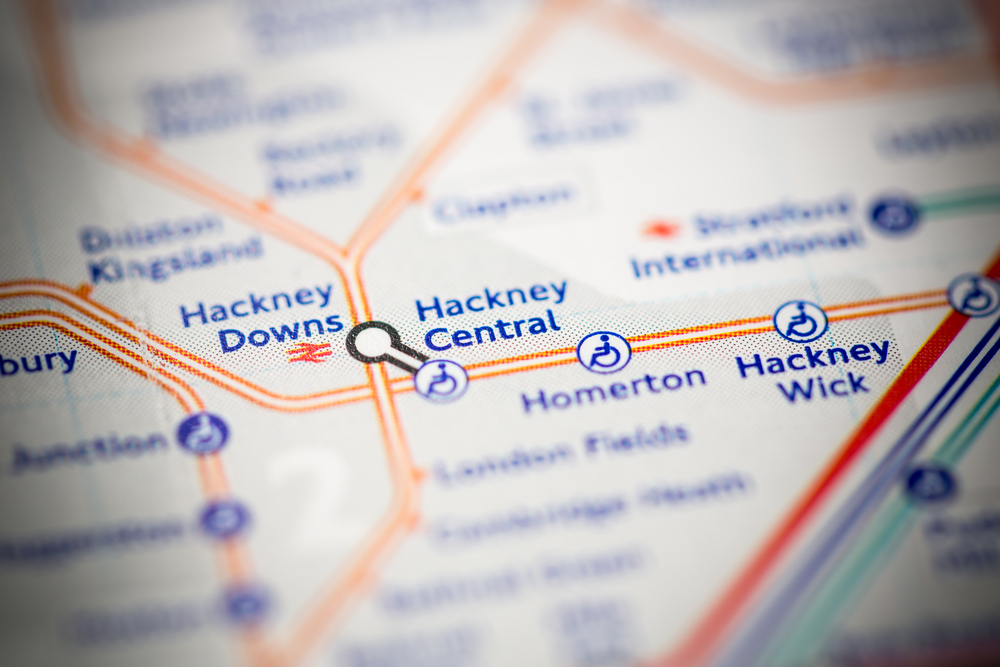
Health inequalities and the effects of socio-economic status (SES) on health are not new concepts. The Social Determinants of Health (SDOH) are a well-established group of life conditions and circumstances that have been found to have significant effects on health outcomes and are factors that are considered when discussing disparities in health between different population groups (Kaiser Family Foundation, 2018). Examples of social determinants of health include: income; educational attainment; employment; housing; and neighbourhood and physical environment (NEJM Catalyst, 2017).
Ethnic disparities in health are also an area that is being increasingly investigated. Studies have found that individuals from Black and Minority Ethnic populations typically fare worse in health outcomes than their White counterparts (Public Health England, 2018). The coronavirus disease 19 (COVID-19) pandemic has been a large-scale, worldwide example of this and, once again, highlighted the inequities within health when it comes to different ethnic populations. On-going statistical studies in the UK and the USA have found that COVID-19 has been disproportionately claiming the lives of those in Black and Minority Ethnic populations, including healthcare staff, with the mortality of Black people being three-to-four times that of the White population (ONS, 2020; The King’s Fund, 2020; Health Foundation, 2020; The Guardian, 2020).
A similar trend in ethnic disparities can be observed within mental health. The 2014 Adult Psychiatric Morbidity Survey found that common mental disorders (CMDs), such as depression, obsessive-compulsive disorder (OCD) and phobias, were more prevalent amongst Black and Black British women (NHS Digital, 2014). Psychotic disorders were found to occur more in Black men (3.2%) than White (0.3%) and other ethnic groups (notably 1.3% in Asian men) (NHS Digital, 2014).
When it comes to accounting for these ethnic disparities in psychotic experiences, socio-economic status alone has been found to not attenuate all these differences (Cohen et al., 2013). Coid et al. (2020) set out to study the influence of neighbourhood and physical environment instead (a social determinant of health), by analysing the syndemic effects these factors might have. The syndemics theory considers the synergistic effects of the presence of certain illnesses or diseases, in particular social conditions, that contribute to health inequalities (disease concentrations), such as a deprived neighbourhood, and how these conditions interact with the diseases to cause greater detrimental effects than if those conditions did not exist (disease interaction) (Singer et al., 2013). In this paper (Coid et al, 2020), the authors investigate the effects of area-level syndemics on samples of young White, Black and Minority Ethnic men nationally, and living in the London Borough of Hackney, on rates of psychotic experiences and anxiety.

Ethnic disparities in health, namely between White individuals and their Black and Minority Ethnic counterparts, have been extensively highlighted as forming a major contribution to understanding and analysing health inequalities in the UK and globally.
Methods
Study participants:
- Individual sampling units (census areas of 150 households) were randomly selected within British regions in proportion to population, following the method applied for the Second Men’s Modern Lifestyle Survey in 2011
- Three surveys were carried out as follows:
- One main survey – a representative sample of men aged 18-34 from England, Wales and Scotland
- One boost survey – young Black and Minority Ethnic men from output areas with a minimum of 5% Black and Minority Ethnic inhabitants
- One boost survey – young men from output areas in the London Borough of Hackney
- The participants gave informed consent to be part of the study and filled in a questionnaire privately, with a payment of £5 for participation
Sample sizes and demographics:
- Unweighted sample = 3,725 men
- Weighted sample = 3,750 men
- All men were aged 18-34 years
- 1,999 (53.3%) of the men were from the representative survey, 991 (26.4%) were from the Black and Minority Ethnic sample, and 760 (20.3%) were from Hackney
- Smaller Black and Minority Ethnic subgroups were excluded from analyses because most Black and Minority Ethnic individuals in the UK are of Black African or Caribbean origin or South Asian (Indian, Pakistani, or Bangladeshi)
- Results from the London Borough of Hackney were chosen to be compared to the general population because it is ethnically diverse and has extremely high recorded levels of adverse health and social issues
19 health-related measures were evaluated from 4 different domains:
- Sexual health/risks
- ≥10 sexual partners in the past year; contraceptive use rare/never; sex with prostitutes; anal sex; sex with men; forced sex on partners; or sexually transmitted infection (STI)
- Substance dependence
- Alcohol or drug dependence
- Psychiatric morbidity
- Anxiety disorder; depressive disorder; or psychosis
- Violence and criminality
- Repeated assaults/fights; intimate partner violence; fear of violent victimisation; weapon carrying; gang membership; friends encouraging criminal activity; or imprisonment
Screening questionnaires used:
- The Psychosis Screening Questionnaire (PSQ)
- The Hospital Anxiety and Depression Scale (HADS)
- The Alcohol Use Disorders Identification Test (AUDIT)
- The Drug Use Disorders Identification Test (DUDIT)
In addition, Participants were asked if they had ever seen a psychiatrist or psychologist or had ever had a psychiatric hospital admission.
Statistical analysis:
- Logistic regression analyses were used to study associations between demography and ethnicity
- Black and Minority Ethnic subgroups were compared to White men in the main survey
- The prevalence of health outcomes among Black and Minority Ethnic groups in the main and Hackney surveys were compared
- Adjustments were made for age, single status, non-UK birthplace and Index of Multiple Deprivation (IMD) rank
- Confirmatory factor analysis (CFA) was used to validate the structure of the health domains and derive factor domain scores
Results
Disparities in psychotic experiences
- Black men in the national survey reported a higher mean number of psychotic experiences than their White counterparts before adjustment for sociodemographic characteristics (age, being single, non-UK born, social class, and index of multiple deprivation, IMDR), particularly the symptom of “thought insertion”
- After adjustment for sociodemographic characteristics, no differences were found between Black and Asian men and their White counterparts in a number of categories, including number of psychotic experiences, consultation of a psychiatrist or psychologist, and hospital admission
- However, in Hackney, Black men showed multiple differences on all variables post adjustment for sociodemographic characteristics, apart from hallucinations, and were more likely to have a psychiatric hospital admission than their White counterparts in the national population
- South Asian men in Hackney showed similar trends to Black men in Hackney, when compared to White men in the national population
Disparities in health measures
- After adjustment for sociodemographic characteristics, Black men in the main national survey were significantly less likely to report sex with men or anal sex; more frequently reported was ≥10 sexual partners in the past year
- Black men in Hackney were more likely to report a wide range of adverse health measures than White men in the main national survey, including STIs, coercive sex, alcohol dependence, drug dependence, depressive disorder, anxiety disorder, psychosis, imprisonment, repetitive violence, and weapon carrying
- In the main national survey, South Asian men were significantly less likely to report anal sex, sex with prostitutes, friends encouraging criminal behaviour, and repeated violence, but more frequently reported anxiety disorder
- In Hackney, South Asian men were more likely to report certain adverse health measures than White men in the main national survey, including sex with prostitutes, coercive sexual behaviour, alcohol dependence, depressive disorder, and gang membership, but were less likely to report anal sex
- White men in Hackney were more likely to report alcohol dependence, ≥10 sexual partners in the past year, depressive disorder, and anxiety disorder than White men in the main national survey
The syndemic model
- Confirmatory factor analysis (CFA) was used to include the four domains for the health-related and other measures in the syndemic model that was developed for the study
- First- and second-order syndemic factors were identified by domain
- There was evidence of a syndemic effect between violence/criminality + high-risk sexual behaviour and psychotic experiences and anxiety; similar results were found for the syndemic effect of substance misuse + sexual health on those two psychiatric outcomes
- The combined associations of the two pairs of factors on psychotic experiences and anxiety were significantly increased, showing a synergistic effect
- In terms of the general syndemic effect of location:
- In the main national survey, there were no significant differences in Black and White men, but results for South Asian men were significantly lower than for White men
- Scores for Black, South Asian and White subgroups in Hackney were significantly higher than for White men in the main national survey

When adjusted for sociodemographic characteristics, Black men in Hackney reported higher on all but one of the psychosis measures than South Asian and White men in Hackney compared to their White counterparts in the main national survey.
Conclusions
Heightened area-level syndemic effects on Black men
- Black men in Hackney had a higher number of psychotic experiences, higher levels of all psychotic experiences (except hallucinations), and more diagnoses of psychosis
- This is in contrast to the national Black and Minority Ethnic population studied, which showed no disparities in psychotic experiences that have been observed in previous population studies after adjusting for both social status and neighbourhood effects/sociodemographic characteristics
- In addition, the national Black and Minority Ethnic population did not report more substance dependence, high-risk sexual behaviour, crime/violence, or poorer mental health than their White counterparts in the main national survey post adjustment, with the exception of increased anxiety disorder in South Asian men
- In comparison, Black and South Asian men in Hackney were more likely to report depression and anxiety, alcohol dependence, high-risk sexual behaviour, and gang membership than their White counterparts in the main national survey; Black men reported more violence and criminality
- An interesting finding was a higher prevalence of anxiety and depression, alcohol dependence, and a higher number of sexual partners amongst White men living in Hackney than in the general population; this finding revealed that all ethnic groups can be impacted by area-level syndemic effects
The authors conclude that further research is required to understand the specific pathways involved in these interactions between psychiatric morbidity and health conditions that result in multiplied adverse health effects on an individual and population level. For example, the links between violence exposure and stress-promoted immune dysregulation and the role of addictive behaviours in substance misuse and high-risk sexual behaviour.

Area-level syndemic effects were found to have the most adverse impact on the report of psychotic experiences by Black men in Hackney compared to South Asian and White men in Hackney.
Strengths and limitations
Strengths
- Random location sampling was used to gather the sample of participants, a method that reduces the potential of bias when participants can be chosen for a survey based on their location
- Use of random location sampling also allowed for the identification and inclusion of participants according to representative strata and their frequency in the population (method based on the National Census)
- The three components being analysed in relation to their effects on psychiatric morbidity (substance misuse, sexual health/risks and violence and crime) were examined in pairs for associations/interactions to avoid issues of collinearity
- Validated and widely used screening tools were used for assessing psychosis, anxiety and substance misuse, in particular the PSQ (Psychosis Screening Questionnaire)
Limitations
- The results from one location (Hackney) have been used to investigate the hypothesis of area-level syndemic effects, providing an explanation for higher rates of psychotic experiences where socioeconomic status is not an attenuating factor
- The study is limited to young adult men, aged 18-34, therefore not showing how this syndemic model might affect the rates of psychotic experiences in men above the age of 34, adult women, or non-binary individuals
- Despite analysing the effects of the three components with a pairwise approach to avoid issues of ‘collinearity’ – that is the synergistic effects observed between the four health components together (with the factor of psychotic experiences and anxiety included) were still highly influenced by collinearity. This meant the authors were unable to show any interaction between violence/criminality and substance misuse on the outcome of psychotic experiences and anxiety
Implications for practice
- The results of the study suggest a new way of explaining the reasons behind ethnic disparities in UK inner-urban areas
- The area-level syndemic effects observed could provide an explanation for psychotic experiences and raised incidence rates of non-affective psychosis amongst Black and Minority Ethnic individuals observed in inner-urban areas with stark deprivation. This is because the measurement of psychotic experiences in the study were of persisting, and not remitting, psychotic experiences, which then transition into the development of a psychotic disorder
- Further investigation in longitudinal studies of the synergy between the four health components of the syndemic is needed, as the synergistic effects may increase the risk of transition to clinical psychosis, which poses an important public mental health problem
- The results suggest a need for additional interventions to promote behavioural change and healthier lifestyles to avoid the health risks and synergistic effects of the four components on health outcomes, as well as recommendations that have been made for the promotion of mental health equality between the most and least deprived areas

The results of this study suggest a new way of thinking about and analysing the effects of geographical location on the prevalence and incidence of psychiatric morbidity in Black and Minority Ethnic groups, particularly in inner-urban areas.
Statement of interests
None.
Links
Primary paper
Coid, J., Gonzalez Rodriguez, R., Kallis, C., Zhang, Y., Bhui, K., De Stavola, B., . . . Ullrich, S. (2020). Ethnic disparities in psychotic experiences explained by area-level syndemic effects. The British Journal of Psychiatry, 217(4), 555-561. doi:10.1192/bjp.2019.203
Other references
Artiga S, Hinton E. Beyond Health Care: The Role of Social Determinants in Promoting Health and Health Equity. Kaiser Family Foundation. 10 May, 2018.
Social Determinants of Health (SDOH). NEJM Catalyst website, last accessed 23 Aug 2020.
Local action on health inequalities: Understanding and reducing ethnic inequalities in health. Public Health England Government webpage, last accessed 23 Aug 2020.
Coronavirus (COVID-19) related deaths by ethnic group, England and Wales: 2 March 2020 to 10 April 2020. Office for National Statistics website, last accessed 23 Aug 2020.
Bailey S, West M. Ethnic minority deaths and Covid-19: what are we to do? The King’s Fund, 20 Apr 2020.
Elwell-Sutton T, Deeny S, Stafford M. Emerging findings on the impact of COVID-19 on black and minority ethnic people. The Health Foundation, 20 May 2020.
Pilkington E. Black Americans dying of Covid-19 at three times the rate of white people. The Guardian, 20 May 2020.
Mental Health Foundation. Fundamental Facts About Mental Health 2016. Mental Health Foundation, 2016.
Cohen CI, Marino L (2013). Racial and ethnic differences in the prevalence of psychotic symptoms in the general population. Psychiatr Serv. 2013 64(11) 1103-1109.
Singer M, Bulled N, Ostrach B, Mendenhall E (2017). Syndemics and the biosocial conception of health. Lancet. 2017 389(10072) 941-950. [PubMed abstract]
